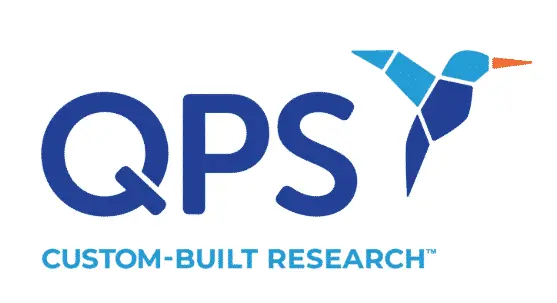Human Radiolabeled Mass Balance (hAME) Studies for Regulatory Submission

Human Radiolabeled Mass Balance (hAME) Studies for Regulatory Submission
Overview
In this webinar, QPS will provide a comprehensive overview and practical guide to get the most out of your hAME study, covering the many nuanced steps and considerations.
Through this discussion, Wim Tamminga will walk through main objectives of an hAME study and the ethical and regulatory considerations for hAME studies. In addition, he will cover formulation of mock batches, releasing of a subject based on radioactivity, an overview of the timelines, data analysis and reporting.
QPS can offer all services required for traditional hAME studies, including studies with radiolabeled compounds (approx. 100 μCi and therapeutic dose of IMP) and micro-tracer studies. To better describe the various study types and components, Wim will present three Case Studies, based on recent experiences in our QPS Netherlands facility.
Meet the Speaker
Wim Tamminga, Ph.D.
Vice President and Global Head of Early Phase Clinical, QPS Wim Tamminga joined QPS in 2010 and is currently serving as Global Head of Early Phase Clinical, based in Groningen, The Netherlands. In this position, Wim oversees QPS’ fast growing Early Phase Clinical business (Phase 0, I and IIa) in the US, Europe and Asia. In this role, Wim leads a large team of cross functional clinical development personnel, ensuring seamless implementation of Early Phase Clinical studies in over 500 beds at 6 sites around the world. Under his leadership more than 100 hAME studies have been performed. Wim received his PhD in Pharmacology/Pharmacogenetics from the University of Groningen in The Netherlands.
Key Learning Objectives:
- A practical explanation on how to conduct an hAME study.
- How to decide to conduct an hAME or Microdose study.
- When to choose Healthy Volunteers or Patients in an hAME study.
- Should you measure PK in an hAME study?
Date: May 20th, 2021
Time: 9am EDT | 15:00 CEST
(Ideal for East Coast US and Europe)
Date: June 8th, 2021
Time: 11am PDT
(Ideal for West Coast US)
Human Radiolabeled Mass Balance (hAME) Studies for Regulatory Submission
Overview
An hAME study typically covers two analyses for mass balance 1) before dosing: the analysis of the formulation and dosing samples, and 2) after dosing: the analysis of the human blood, plasma, feces, and urine samples. Mass balance determines the amount of radioactivity dosed to the subject compared to the amount excreted. This main analytical objective determines the excretion and clearance profiles for total radioactivity in blood, plasma, urine and feces. Another objective is to determine the recovery values (percentage of the dosed radioactivity) which, in relation to the discharge criteria, define when subjects are allowed to leave the clinic.
Subsequent to mass balance analysis, the samples are analyzed for metabolic profiling. Understanding the human metabolic profile is a critical part of a regulatory package in support of new drug applications. Metabolite profiling elucidates major metabolic pathways, as well as identifies and quantifies metabolites and their relative proportion resulting from the adminis- tered radiolabeled drug. Samples are profiled using selective chromatographic methods and high-resolution mass spectrometry to separate metabolites from the unchanged drug. The metabolites are characterized and potential structures are proposed. Finally, all radiolabeled peaks (unchanged drug and metabolites) are radio-quantitated to calculate the ratio of quantifiable metabolites to parent and the overall exposure of the subjects to the drug and its metabolites.
This webinar will examine the typical mass balance aspects of formulation and study sample analysis as well as some general aspects for working with radioactivity. Also discussed will be understanding how metabolite profiling supports regulatory filings and future clinical studies.
Meet the Speakers
Fred Van Heuveln, Ph.D.
Fred graduated in inorganic and physical chemistry at the University of Groningen in The Netherlands. For over 15 years, he was involved in materials research at the Energy Center of The Netherlands and obtained his PHD in 1997. Over the last 16 years, Fred has been Head of the dedicated Elemental Analysis group, part of the QPS ICP-MS team, which has performed studies with about 40 different elements, from simple total analysis of one specific element to complex speciation studies with simultaneous analysis of free and protein bound drug compounds. Additionally, Fred is the Radiation expert at QPS Netherlands. In 2012, Fred and his colleagues published an extensive review of the QPS ICP-MS applications within drug development in the Journal ‘Bioanalysis’, click here to view.
Diane Grotz
Diane Grotz joined QPS, LLC in 2018 and is currently serving as Biotransforma- tion Group Leader, in the DMPK department. In this position, Diane serves as manager of the biotransformation group, which performs metabolite profiling for in vitro, and preclinical and clinical in vivo studies. Prior to joining QPS, Diane focused on metabolite profiling as an Associate Principal Scientist at Merck (NJ, USA), and as a Senior Scientist at Schering-Plough (NJ, USA) supporting multiple therapeutic areas; also serving as Principal Investigator for discovery therapeutic teams, including responsibility for DMPK research. Diane received her Bachelor’s degree in Chemistry from Rutgers University in New Jersey, USA.
Key Learning Objectives:
- Typical analytical aspects of a formulation analysis in relation to an hAME study.
- Analysis of human study samples to determine the recovery of a radioactive labeled drug in an hAME study.
- Determination of the exposure of unknown metabolites as proportion of drug-related material.
- Comparison of metabolic profiles to provide crucial information for your toxicological studies.
Date: May 27th, 2021
Time: 9am EDT | 15:00 CEST
(Ideal for East Coast US and Europe)
Date: June 16th, 2021
Time: 11am PDT
(Ideal for West Coast US)








